Excitement levels during a turkey hunt can range from exhilarating to depressing. Mine are often somewhere in between until I strike up a bird. Then I’m beyond excited. Other than a bugling bull elk, no other game animal is as exciting to hear as a gobbler in the spring! Sometimes it can be hard to get a turkey to gobble and harder yet to call one in. Calling turkeys is an art form and it takes a lot of practice to get good at it.
To call in a turkey, you have to evaluate all the available information you can gather from the bird and decide on how much to call. Sometimes it’s best to call sparingly, other times you’d be remiss not to call every few minutes. When in doubt, call every 10 minutes.
I like calling turkeys, and it can be hard for me not to call even when I know I shouldn’t! I’m also an aggressive turkey hunter that isn’t afraid to push the limits. Because of this, I’ve had a lot of success and of course, my fair share of unsuccessful hunts. I’ve learned the most from my unsuccessful hunts and I’ve used them to learn from my mistakes and hone my turkey-calling skills.
Calling turkeys can’t be summarized in a few sentences because there are different techniques depending on the situation you are in. How often you call will often determine your success or failure.
Below, I discuss what calls to use and how often to call during the most common scenarios turkey hunters find themselves in during the spring and fall seasons. Keep reading to learn about calling turkeys!
Spring Scenarios
Spring is the most popular time of year to hunt and try to call in turkeys. Spring is the breeding season and the easiest time to call in lovestruck toms. That said, it can still be tricky to call in turkeys in the spring. There are some tried and tried methods that you should put in your turkey calling arsenal. Below, we cover multiple spring scenarios, how often I prefer to call during each of them, and give you some of my best turkey-hunting tactics.
Striking up a Tom
Getting a tom to gobble otherwise known as striking up a tom, is often the first thing that you will try to do on a hunt. If it’s not, it should be. The only scenario where you might not want to do this is when you have already patterned birds and they are pressured by other hunters.
Did You Know I Had a Newsletter?! 📬
I do! I send out a weekly email that talks all about deer hunting and is a bit more personal than a regular article. If you sign up right now, I will even send you the first chapter of my Ebook “The Hunters Guide to Scent Control” for free! What is there to lose? 🙂
I prefer to use a box call to strike up birds. I typically use this calling method in the early morning as the eastern sky is starting to lighten but it’ll work all day. Rather than calling based on a specific amount of time, I will get on a ridge, old trail, or another feature that is easy to walk and allows me to hear what is around me. Then, around every 200 yards, I will yelp with my box call.
I usually do 6 to 10 yelps with each yelp getting progressively louder. I often call softly at first and then crank it up if I don’t get a response. Once I’ve done three sets of yelps, I move roughly 200 yards and repeat. If you are in a dense forest or in a valley, you may want to call even more often. You want to make sure that the birds can hear you.
That’s all there is to it, rinse and repeat until you get a response. I like to keep it simple and although sometimes I use owl hoot calls, peacock calls, or even a coyote howler to locate birds, I prefer to use my box call.
If you haven’t used locator calls all that much, or you are looking for a new one to try out, read my other article titled “9 Tested & Proven Turkey Locator Calls” to learn everything you would ever need to know about locator calls!
After you get a response, determine if the bird is on the ground or still on the roost. You can do this by getting as close as you dare and listening closely to his gobbles. If they seem to be moving in one direction you know he’s on the ground, if they are only in one spot and it’s still early in the morning he may still be roosted. Toms will often stop gobbling for a short period right before and after they fly down from their roost.
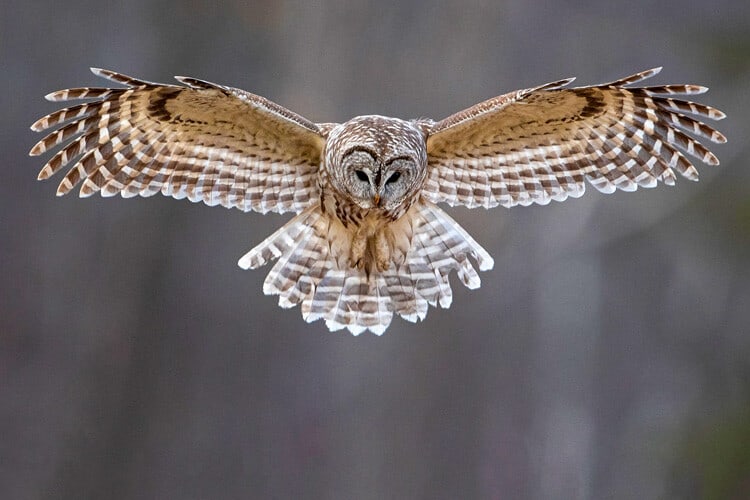
Tom Is Frequently Gobbling Back
This is my favorite scenario and it often ends in a flopping bird on the ground. If every time you yelp or cluck the tom gobbles back, you know he is fired up. This bird should be fairly easy to call in, but there can be issues that arise.
It’s important to remember that when you’re trying to call in turkeys, you are attempting to get them to do something unnatural. Typically the hens will go to the gobbler but because of a turkey’s incredible eyesight, when hunting you want the tom to come to you.
When I am calling in turkeys I try to get in the mind of the bird and imagine what it is doing and thinking. This takes practice and a bit of imagination, but it works. In this scenario, when starting out calling, call just enough to let the bird know where you are. Don’t start yelping back at him every 30 seconds or every time he gobbles.
The goal of calling is to get the tom frustrated or curious enough to come over and see what the “hen” is doing and why she isn’t coming over. Try calling at every third gobble or once every three to five minutes.
This seems to work very well when the tom is alone and not with hens already. If he is, then he probably won’t come over. You might have to try to find him later in the day when he leaves his hens in search of new ones. If you’re short on time you can get aggressive and go after the bird. Especially if he’s gobbling a lot because then you can keep tabs on his location. When you do this, stop calling and go into stealth mode.
The goal is to get as close to the tom as possible without spooking him (sub 100 yards) and then set up and softly call to him. I’ve had this work many times, but it is a risky move because you might scare him and not hear from him again that day.
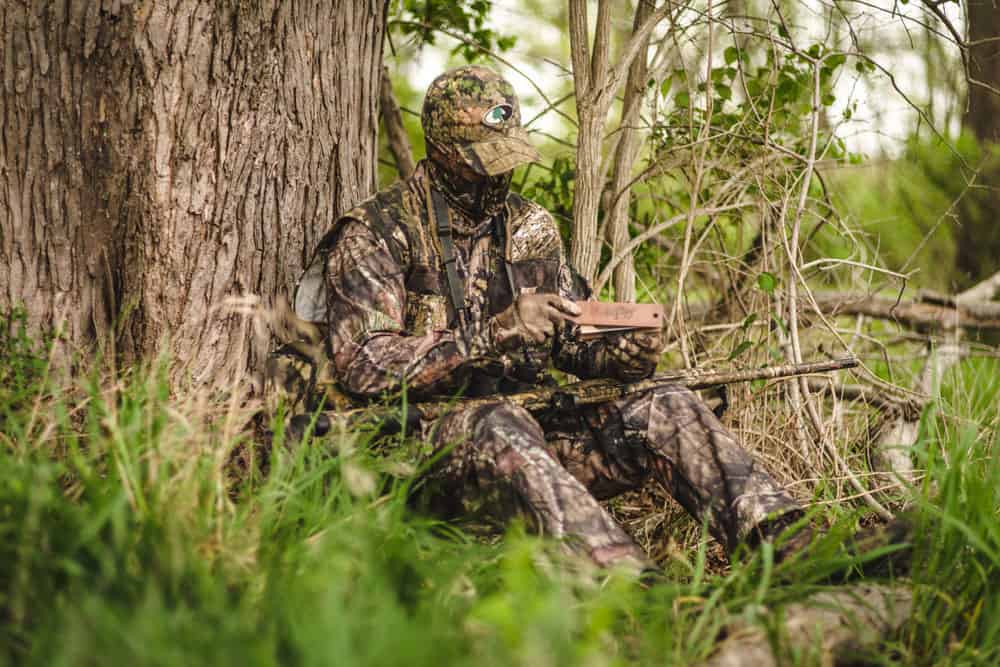
Tom Is Gobbling Every Once in a While
This scenario is all too common, and you will experience it sooner rather than later. This is the bird that just doesn’t seem very interested but wants to let you know that he’s there. In my experience, a tom doing this is likely “henned up” and he will likely be quite difficult to call in.
There are two methods I use when I come across this type of bird. Remember when I said I was an aggressive turkey hunter earlier? This is the scenario when I get most aggressive and you may want to too.
Method 1
When a tom isn’t gobbling back very often try calling softly every few minutes to see if you can get him interested. Try using yelps, clucks, and purrs. Additionally, you can scratch in the leaves with a stick or even your hand or feet to make it sound like foraging turkeys.
Try calling the bird in for half an hour and adjust the amount of calling, cadence of calling, and even the call you are using based on his responses. If he starts gobbling a lot after you’ve changed the way you are calling then keep it up.
Method 2
If that doesn’t work, I prefer to move. If the bird consistently moving in one direction, this is a great opportunity to set up an ambush. This has worked for me numerous times.
Imagine a tom cruising along a field edge away from you. Most of you have probably experienced this before. You need to get ahead of him. This works best if you can get eyes on the bird and know its exact location and roughly how quickly it is moving. Once this is accomplished, all you have to do is quickly move in a wide half-circle and get in front of the turkey and wait.
If all goes well the tom will walk right to you. If possible try to set up as close as you can in front of the bird, because you never know when something will spook the flock or if they will decide to go another direction. Once set up, stay quiet and do not call at all. This is a very good tactic for pressured turkeys.
Method 3
The third tactic you can try if you can’t get ahead of the birds is to start calling very loudly and excitedly. Try to set up a scenario where multiple hens are calling back and forth to each other yelping and clucking and quite frankly, just making a ruckus. When doing this, you want to call almost constantly for several minutes.
It might sound ridiculous but it can work. Sometimes this is enough to get a bird to come over and see what is going on. You can use multiple calls like a box call and a diaphragm call or a diaphragm and pot call to sound like multiple birds.
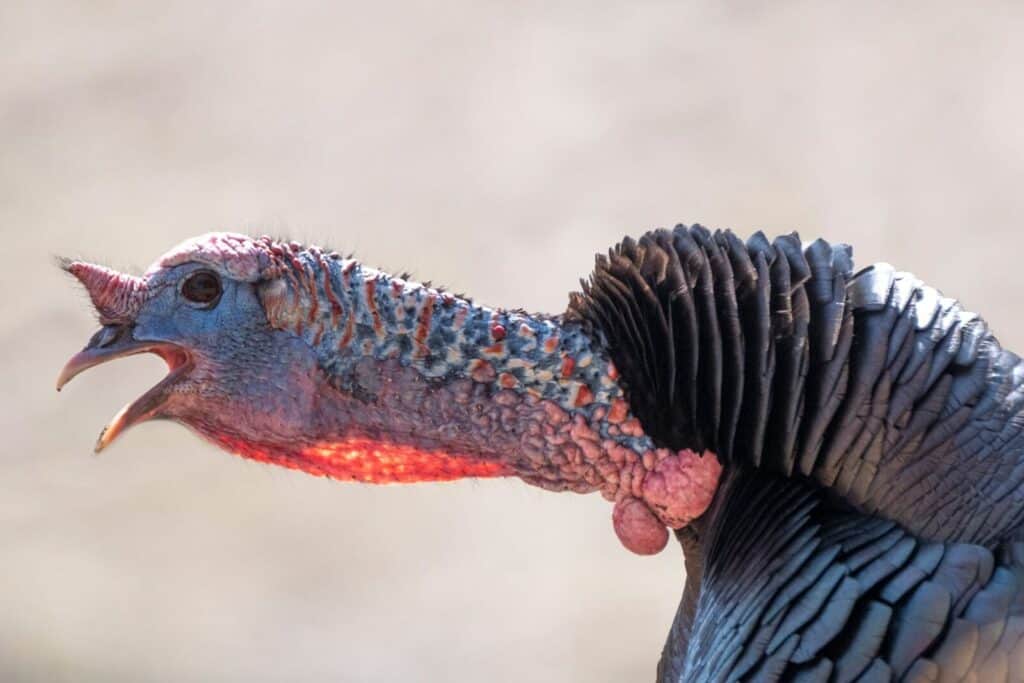
Tom Was Gobbling but Stopped
This scenario can be quite frustrating but if you play it right, it can end with a nice gobbler flopping on the ground. There are a couple of reasons why the bird got quiet.
First, the tom may have hooked up with some hens and doesn’t see a need to gobble at the time.
Second, the tom may have been spooked by another hunter, or coyote, or maybe you called too much. The bird may begin gobbling a little later, in which case you might be able to set up on him and try again.
Third, sometimes toms will quit gobbling on their way to you. Unless you can see the turkey you won’t know why the bird stopped gobbling, so to make this scenario work, you just have to be patient and have a little faith.
When a bird stops gobbling, call softly once every 5 minutes for 30 minutes. Try to mimic the sounds of a content flock of hens. Make mostly clucks with soft yelps, and leaf scratching mixed in. Do this off and on every 5 minutes for around half an hour. Make sure you stay alert and keep movement to a minimum.
If after half an hour you haven’t seen or heard the bird again, then it’s probably best to follow the methods we discussed above for striking up a bird and try to find a new tom to fool.
The Cold Call
This is a scenario I usually don’t partake in, but I realize that some people do, and it can work. The cold call is when you set up to call in turkeys without seeing or hearing any. Hopefully, you are set up in a location where you have seen them before or are at least on a good food source and know that turkeys are in the area.
Sometimes a cold call can turn hot! When cold calling, try switching between sounding like a content turkey flock and a very excited one. Do this by using soft yelps, clucks, and purrs and then try to sound like an excited flock by creating an argument between two different hens. Try calling fairly frequently in this scenario.
You want a tom to find you and the only way he’s going to do that is if he can hear you. Call roughly every 10 minutes for around 1 minute at a time.
If you’re confident in your spot you can keep this up for a long time. That said, it doesn’t hurt to move locations after an hour of calling and try it again somewhere else.
Fall Scenarios
Let’s be honest, unless you have scattered a flock of turkeys in the fall they can be particularly hard to call in. Below, I discuss some common fall turkey hunting scenarios and methods that have worked for me in the past.
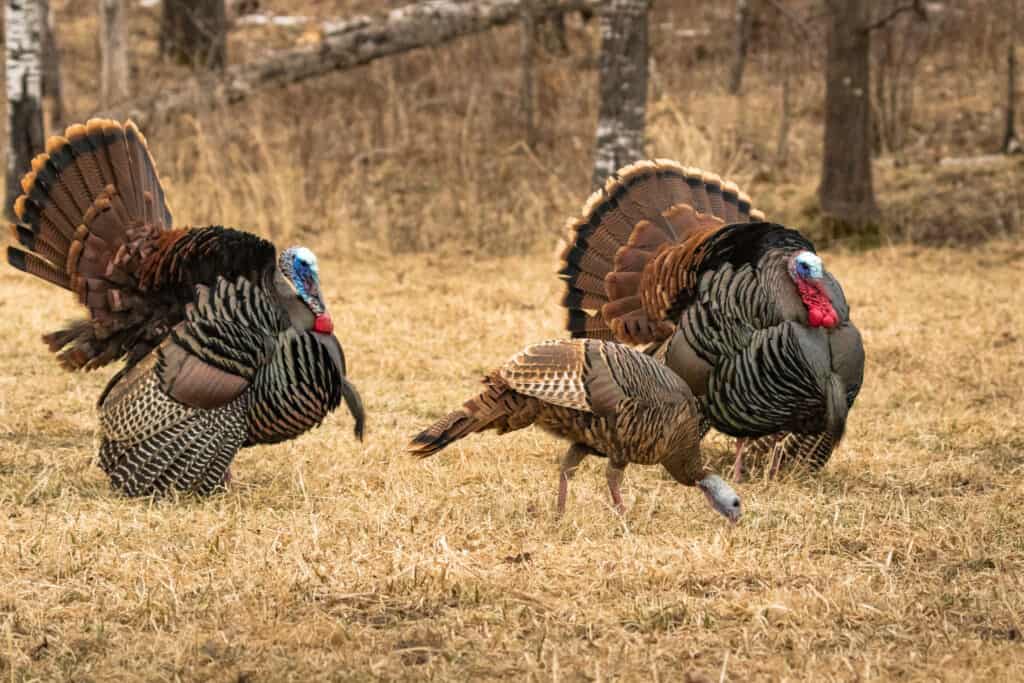
Turkeys Are Nearby and Calling Amongst Themselves
This is a fairly common scenario in the fall. You’ve found a flock of birds and crept in close and now you are wondering what to do. In the fall, it can be pretty difficult to call in birds, but it is possible.
My favorite method to call in turkeys in the fall is to start an argument with one of the hens. You can do this by copying one of the noisiest hens in the bunch and then calling just a little bit more than she does.
If that doesn’t work, then try faking an argument between two different “birds”. Yelp loudly on one call then use the other call to cut that bird off. Go back and forth doing this for a couple of rounds and then take a short two-minute break and do it again. Don’t be surprised if the real turkeys start getting excited and yelping loudly. If this happens, try picking a fight with one of the real hens. Always respond to her. You can also try cutting her off mid-yelp.
If nothing else is working and you’ve already tried calling the birds in, you can try crawling into shotgun range of the birds. It’s tough, but more than possible, especially if there are terrain features you can use. Stay out of sight using features like old creek beds, berms, fence rows, or anything else that will provide some cover.
Busting a Flock
This is probably the most common scenario for fall turkey hunting. In some states, it’s legal to use dogs and they can do an awesome job of breaking up a flock. If not, you can do it without dogs but it’s much more difficult. The goal is to scatter the flock in as many directions as possible.
Once you’ve achieved this you can move 50 to 100 yards away from where the flock scattered and wait 15 minutes or so then start softly calling every one or two minutes. If the turkeys you scattered start calling earlier, copy them. The turkeys will be looking to group back together at this point so you will have a very good chance of calling the turkey to you.
Once you get a response, copy what the bird is doing. If it isn’t heading your way then get a little more aggressive and call louder and more frequently. A useful call to know is a key-key run. This is a common assembly call made mostly by younger turkeys trying to get back together.
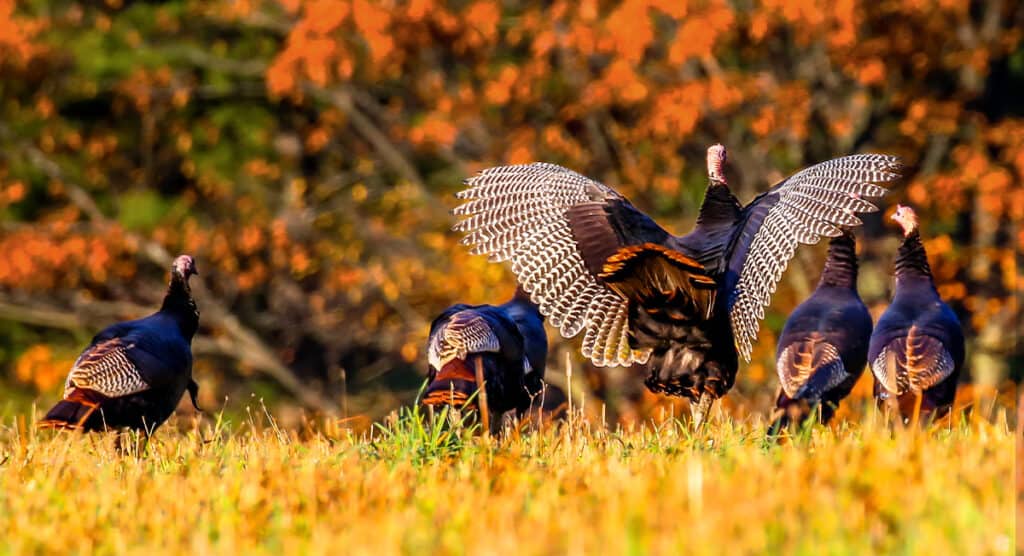
Parting Thoughts
There you have it. We covered the most common scenarios you will find yourself in while turkey hunting. Remember that calling in turkeys is an art and there are many different styles of turkey hunting. After a while, you will develop your own style that will work best for you where you hunt turkeys.
Additionally, always make safety a priority and if you are in an area with a high hunter density make sure that other hunters know that you are a hunter and not a turkey. You can do this by placing a small piece of blaze orange on or near you and keeping your wits about you.
If you see another hunter quietly let them know you are there. Further, in areas of high hunter density, you may want to dial back your aggressiveness and try the techniques above focused on getting the birds to come to you, rather than going after the turkeys.
Good luck and stay safe out there!
Sister Post | 9 Tested & Proven Turkey Locator Calls
A sister post is another post that I have written that follows along with the same topic as the one you just read. After reading this article, you will probably like this next one even more! Here is a little teaser…
One of the biggest challenges of turkey hunting is finding turkeys. That’s where locator calls come in…Keep Reading
1 | The Most Popular Locator Call: An Owl Call
The owl call is awesome for locating turkeys, especially before they come down off their roost and before they go back to their roost in the evening…Keep Reading
2 | Gobblers Will Surely Hear a Loud Goose Call
The goose call is my personal go-to locator call during the day. While the owl call works great in the morning and evening, you do not hear many owls during the day. On the other hand…Keep Reading
Thank you for reading my article! I hope you enjoyed it, and if you have any questions or feedback, please send me an email at [email protected]. If you want to learn more about me or Omega Outdoors, visit my About Page. Otherwise, I hope you have a great day, and check out some of my other articles while you’re here!

